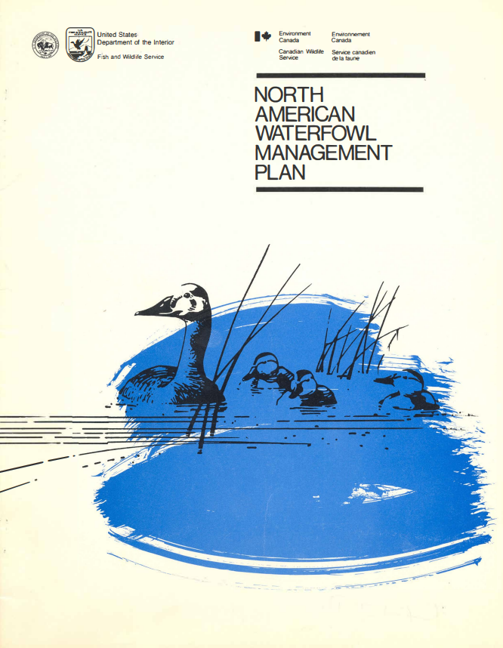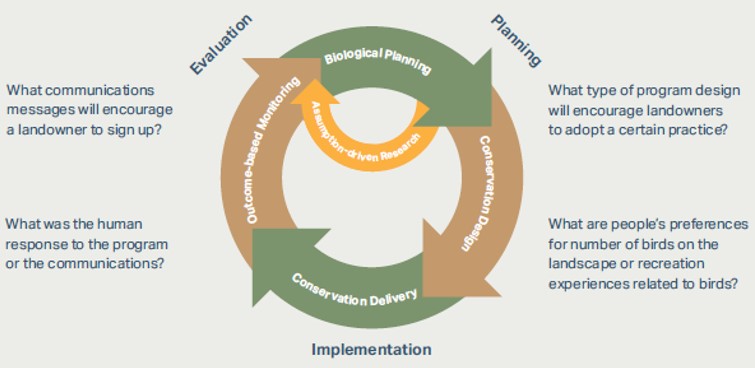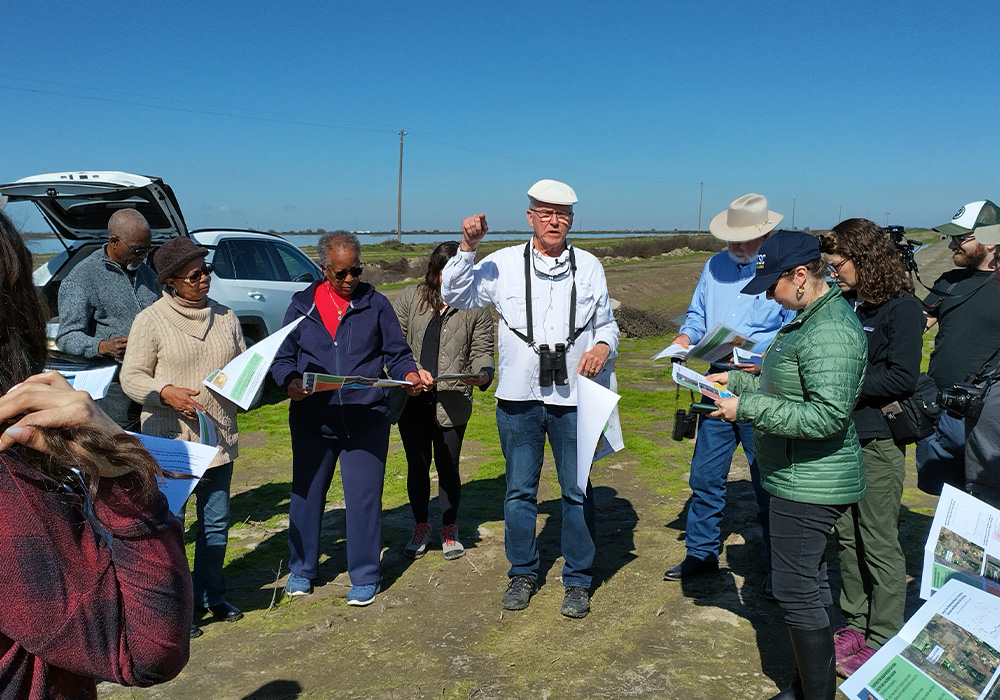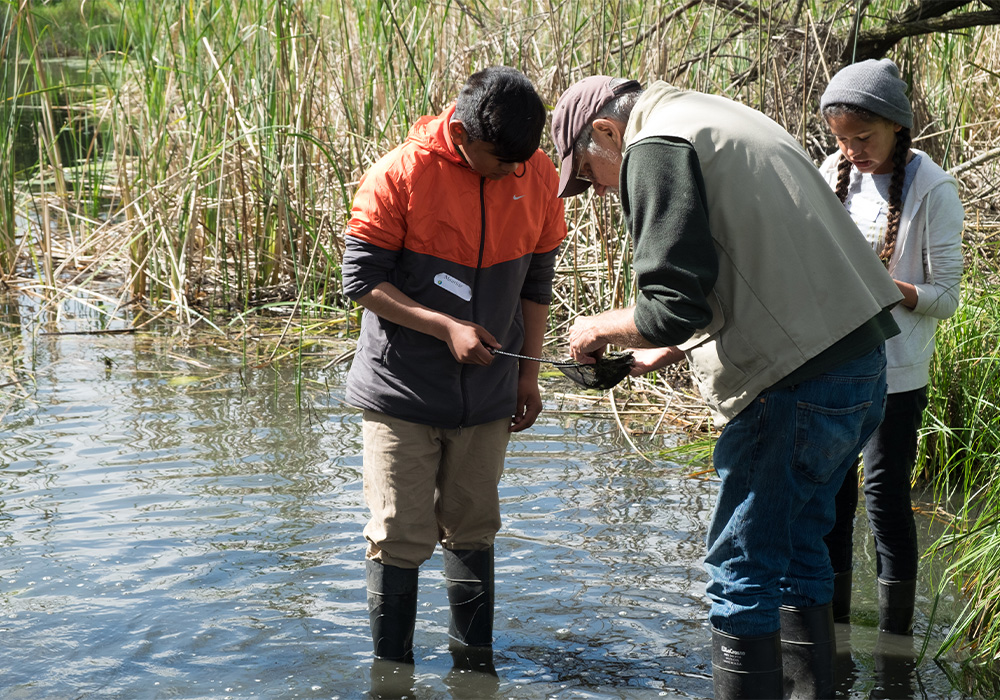Science is Our Foundation
The Central Valley Joint Venture uses the best available science to guide conservation planning and ensure success in its bird conservation work. CVJV partners are continually conducting research to refine and expand our knowledge and improve our conservation delivery, leading to more efficient and effective conservation results to get us to our objectives.
Bringing high-Level Planning to the ground
Migratory Bird Joint Ventures, throughout North America, are the boots on the ground, delivering conservation on the local level. We're charged with stepping down conservation priorities and objectives set at the international, national and regional levels, transposing them into tangible conservation achievements at the local level.
Learn more about the major plans and initiatives our work supports.

USFWS

USFWS
Strategic Habitat Conservation
The CVJV uses the strategic habitat conservation (SHC) process as our adaptive, science-based approach to conservation delivery. Science includes the biological and ecological aspects of birds and their habitat requirements at multiple spatial scales, as well as the social science that is the foundation for the human dimensions' aspect of conservation.
We're always striving to better understand our environment and adapt our approaches for a brighter tomorrow. Take a look at our Monitoring and Evaluation Plans and our latest Science Needs Assessment below.
Human Dimensions of Bird Conservation
We know conservation is done for, with, and by people.
Understanding the human dimensions of natural resource conservation broadens our focus beyond wildlife and habitats to encompass the social and political considerations that influence wildlife and habitat management.
This understanding allows us to address more concerns, achieve multiple benefits from our work, and expand our partnership.

Steve Haze

David Kalb
The Research
The CVJV Partners are continually conducting research to refine and expand our knowledge and improve our conservation delivery, leading to more efficient and effective conservation results to get us to our objectives
CVJV Implementation Plan
The CVJV Implementation Plan provides practical information to guide policymakers, state and federal agencies, local governments, private landowners, and others, working collaboratively to improve the Central Valley for birds and people.
